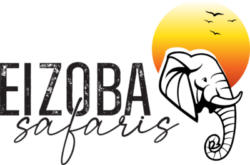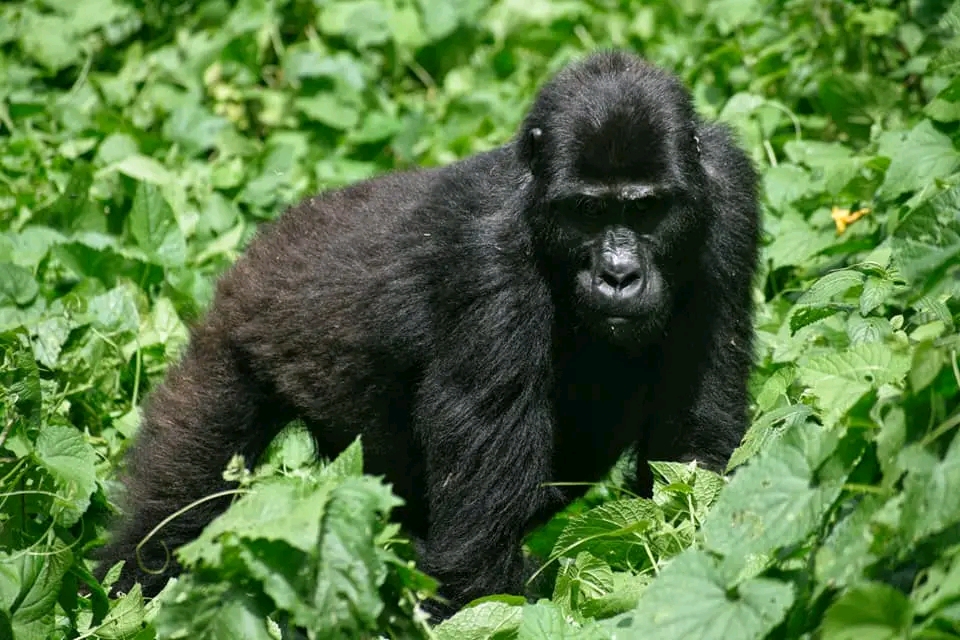
Uganda Gorilla Safari to Mgahinga Forest National Park
Guide To Mgahinga National Park
The montane-woodland, montane-forest and large swathe of bamboo forests supports a large population of golden monkeys, found only here in Uganda. They are also home to the Nyakagazi family of mountain gorillas, the only habituated group outside of Bwindi.
Traditionally, Mgahinga was used as an ‘over-flow’ gorilla tracking destination for Bwindi, but that has changed for two reasons. The first is that the increase in the cost of Rwandan gorilla permits to $1,500 per person has prompted visitors to explore Rwanda and then nip across the border to Mgahinga where the treks cost $700 per person (at time of writing).
The second reason is that Mgahinga is such a wonderful place to visit. Situated so closely to Mutanda and Bunyoni lakes that you can spend a week in the far southwest and save the rest of Uganda for a second trip.
In addition to gorilla treks and golden monkey excursions – both a standard visit and the longer habituation experiences – Mgahinga is an excellent general trekking destination. Challenging guided day hikes are available to the summits of all three of the mountains accessible from Uganda: Gahinga, Sabyinyo and Muhabura.
Things to do in Mgahinga Forest National Park
Gorilla Trekking
The gorilla trekking in Mgahinga follows the same model as in Bwindi. Treks depart in the morning at about 9am. The length of the trek before you make contact with the gorillas depends on the location of the gorilla family. Contact lasts for one hour, during which you will be about 7 metres from the gorillas. When the hour has elapsed, you return through the forest to Park HQ, normally returning by early afternoon.
Although gorilla families constantly cross the border from Rwanda to Uganda, there is only one family habituated to make contact in Mgahinga. Called the Nyakagazi group, it has five silverbacks, two adult females and three young gorillas.
Between 2004 and 2012, after being attacked by a lone silverback, the family spent most of the time on the Rwanda side of the border. However, since 2012, they have been a regular presence on the Ugandan side. In the event they move again after permits have been bought, the Ugandan Wildlife Authority has committed to moving the treks to Bwindi or refunding the money.
Like in Bwindi, Mgahinga gorilla treks can be tough and challenging experiences. You need to be physically and mentally prepared and adequately dressed. Get that right, and you will enjoy one of the most memorable wildlife experiences in the world.
Golden Monkey Tracking and Habituation
Golden monkeys are large, inquisitive and mischievous old world monkeys found in the bamboo zone of the Virunga Volcanoes. They have a bright orange-gold body, cheeks and tail, with black limbs, crown and tail-end.
The monkeys range through the bamboo forest looking for food. Now used to human visitors, they continue their foraging and playful interactions without pause.
Found above 2,500 metres, the trek is challenging, but not normally as tough as gorilla tracking. Two versions are available: the standard trek with one hour contact and a habituation trek where you spend much longer on the mountain with the research team.
Guided Treks in Mgahinga Forest National Park
For those spending more than a couple of nights in Mgahinga, there are great guided trekking trails available, which take you high up the mountains. The treks depart daily at about 7:30 and all last from 7 to 9 hours depending on the fitness and interest of the trekkers.
The shortest route is the 1,100-metre climb from the park gate to Gahinga’s peak. The route to Sabyinyo’s peak involves a 1,300-metre climb on an 8-hour round route. Climbers should note that the final approach to the summit uses a ladder climb up three consecutive rock faces.
The greatest climb is to the 4,127m summit of Muhabura Peak. Hikers should look out for symptoms of high altitude sickness following an ascent of 1,793m from the trailhead. No rock faces are involved, but the trek does take grit and determination as you trudge across Afro-montane moorland.



